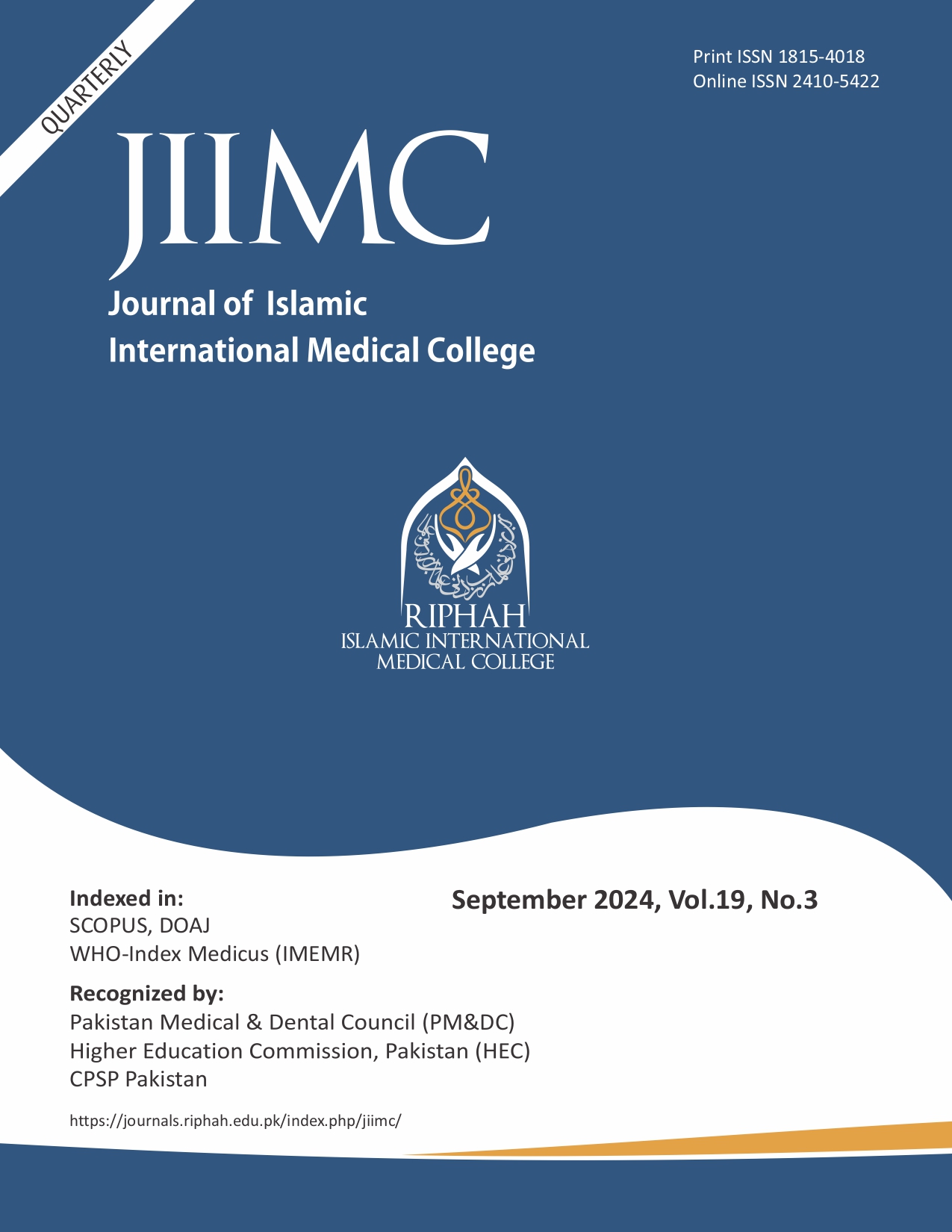Prevalence of Dysmenorrhea and Predictors of Its Pain Intensity Among Female Medical Students: A Cross Sectional Study
Keywords:
Dysmenorrhea, Education, Medical Students, Prevalence, Predictors.Abstract
Objective: The objective of this study is to determine the prevalence of dysmenorrhea and to assess the predictors of pain intensity during dysmenorrhea among female medical students at Rawalpindi Medical University.
Study Design: Descriptive Cross-sectional study
Place and Duration of Study: The study was conducted from May 2023 to October 2023 at Rawalpindi Medical University.
Materials and Methods: A validated, self-structured and self-administered 24 items questionnaire regarding dysmenorrhea was used to assess the prevalence and pain intensity of dysmenorrhea focused on 277 undergraduate medical students, excluding those with any pre-existing pelvic pathology. Participants were selected through convenience sampling and data was analyzed using SPSS version 26.
Results: The study involved 277 female medical students, showing an 83.2% dysmenorrhea prevalence. Based on visual analog scale, most of the research participants experienced moderate to severe pain (49.6%), along with symptoms like depressed mood (50.7%) and mood swings (51.4%). Common outcomes were limited daily activities (57.5%) and emotional instability (55%). Heavy bleeding (p=0.041, OR=3.56) and stress (p=0.041, OR=2.108) were significant predictors. BMI and caffeine consumption showed no significant improvement, but the pain's duration during periods significantly affected pain scale scores, with the "more than 3 days" group reporting the most severe pain.
Conclusion: Dysmenorrhea is widespread among female medical students, causing substantial disruptions in their daily routines. This condition is closely linked to heavy bleeding and stress, highlighting the importance of addressing these factors. Understanding the timing and duration of pain during the menstrual cycle is crucial for developing effective treatment strategies.


